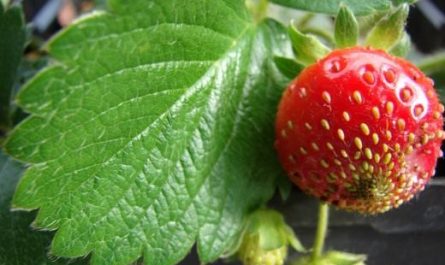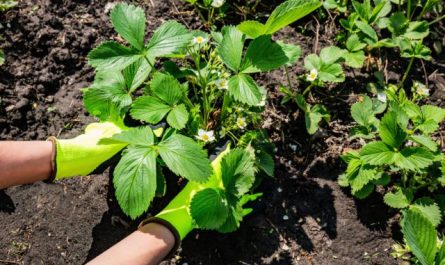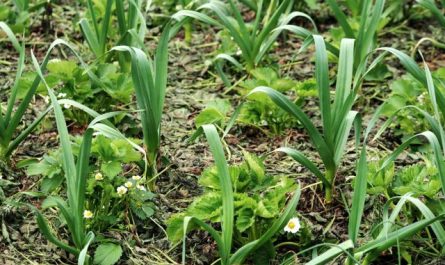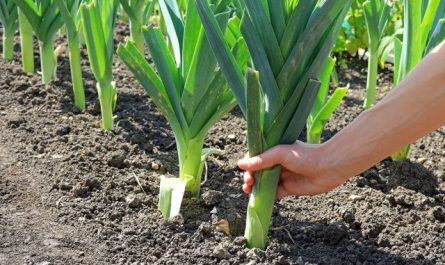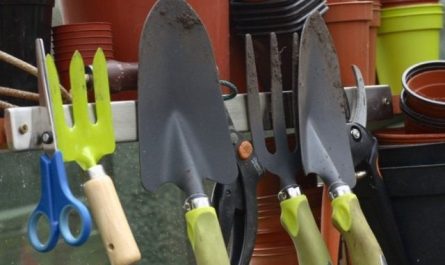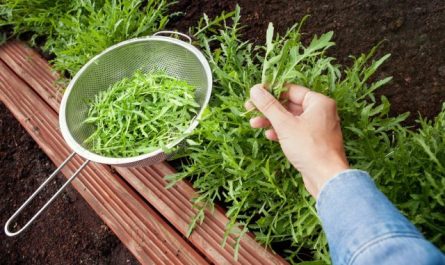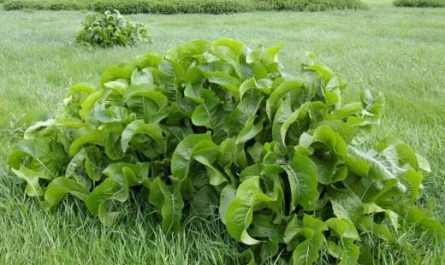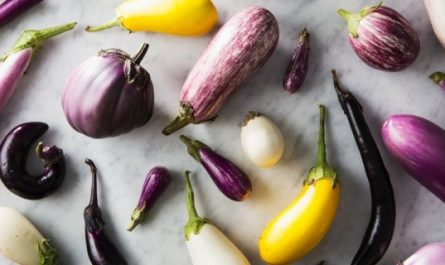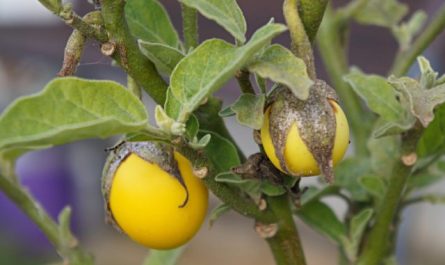Zucchini are wonderful, tasty and healthy vegetables that feel great in temperate latitudes. However, there are often so many of them that there is nowhere to put them. They have already been given to neighbors, prepared, and stored for the winter, and still part of the harvest has rotted. So maybe it’s time to diversify the range of garden crops? Grow other, no less interesting similar species on the plot? We will tell you what can be planted in the garden bed instead of zucchini as alternative options.

Close relatives of zucchini
Zucchini belongs to the pumpkin family (lat. Cucurbitaceae), but there are many vegetable crops that belong to the same family and are not inferior to it in taste and nutritional value. Some of them are considered the most common in our country and grow well, without requiring special care. Others are real exotics, and to see their fruits, you will have to put in a lot of effort.
Zucchini
It is difficult to distinguish zucchini from squash by taste, but vegetable lovers claim that they have a more tender consistency. This type of squash belongs to vegetable pumpkins. It was bred in Italy. A distinctive feature is the bright color of the fruit. They can be green, striped, yellow and look more elegant than their white-fruited or greenish relatives. There is another advantage – usually zucchini is somewhat smaller than squash, so their seed chambers are smaller, and the vegetable is easier to cook. The fruit can be used whole at one time. Zucchini is grown in the same way as squash.
Squash
Patisson is a type of pumpkin. The vegetable was brought to Europe from America. It differs from zucchini by the unusual shape of the fruit, reminiscent of a UFO. Now varieties with yellow, white, green and striped skin have been bred. Greens (fruits at the beginning of ripening), up to 15 cm wide, are eaten.

When marinated, the pattypan squashes, less than 5 cm in diameter, are especially tasty. Young fresh fruits have a denser consistency than zucchini and a distinct mushroom flavor. The crop is grown in the same way as zucchini, but most varieties are less productive.
Pumpkin
We grow two types under the name “pumpkin”: large-fruited pumpkin, or giant pumpkin, and ordinary pumpkin, or hard-rind pumpkin. This is a valuable food product containing minerals, carotene, pectin, and vitamins. Unlike zucchini, the fruits are used in cooking not only for preparing main courses, but also as desserts. They make delicious jams, candied fruits, and marmalade. Hard-rind pumpkins have coarse-fibered flesh, while large-fruited pumpkins have many varieties with tender, very sweet fruits.

The crop surpasses zucchini not only in taste. It is perfectly stored and can lie at room temperature until spring, and sometimes until summer. However, pumpkin is more difficult to cultivate than zucchini. It is more heat-loving, it needs fertilized, loose, rich soil, good lighting. When growing pumpkin from seeds in open ground in cold years, the fruits may not set well or be small. Muscat pumpkins are the most heat-loving. In the middle zone, it is better to plant them as seedlings under film shelters or in a greenhouse.
Kruknek
Another name for crookneck is crookneck. This is a type of hard-rinded pumpkin of unusual shape native to North and Central America. The crop was named “crookneck” for its elongated fruits with a curved, thinner section (“constriction at the base”), reminiscent of a neck. Their surface is unusual – warty with bumps. The color of the skin can be white, cream, orange or bright yellow.

Despite the fact that the vegetable is often mentioned in literature, it is rarely grown in gardens. But it is a dietary product, useful for heart disease and problems with the gastrointestinal tract. And its taste is no worse than that of zucchini. It has light nutty notes. Salads are made from crookneck, it is boiled, fried, stewed, marinated.
Crookneck is more thermophilic than zucchini. The seeds germinate at a temperature of 15-16 °C. The crop is grown through seedlings, sowing seeds at the end of April. The seedlings are planted in a permanent place in early June, when the threat of recurrent frosts has passed. An interesting feature of crookneck is that its flowers bloom in the evening and are closed during the day. They will have to be pollinated manually. To do this, pick a male flower, expose the stamens and touch them to the stigma of the female flower. You can transfer pollen with a brush. The greens are eaten. If you keep them on the plant for too long, the bark will become hard.
Important! Crookneck easily cross-pollinates with other types of pumpkins (zucchini, squash, pumpkins), so it should be planted separately.
Straightneck
Straightneck is translated from English as “straight neck”. This is another variety of hard-skinned pumpkin. The vegetable entered the culture in the second half of the 19th century. According to one version, it is a descendant of the crookneck. Only unlike it, the bush of the straightneck is more compact, and the fruits are straight (as is clear from the name). The surface is smooth or slightly bumpy. The skin is thin, yellow in most varieties, the flesh is tender, more nutritious than that of zucchini.

Unlike yellow-fruited zucchini, straightneck produces high early yields. The fruits should be collected at the green stage, then they become coarse. The crop is light-loving, prefers fertile soils. Seeds are sown for seedlings in the middle zone in mid- to late April (depending on the weather). Agrotechnical methods for growing straightneck are similar to caring for crookneck.
Laguaria
Lagenaria vulgaris is also known as Vietnamese squash and bottle gourd. According to archaeologists, this is one of the first vegetables cultivated by humans. The bottle gourd is a liana with large leaves. The fruits come in a variety of shapes – pear-shaped, snake-shaped, round, bottle-shaped, oval, elongated. From germination to the beginning of fruiting, 120-160 days pass (depending on the variety). Like crookneck, lagenaria blooms at night, so it will have to be pollinated manually.

Interesting fact! Ripe fruits have thick, up to 15 mm, waterproof bark. Since ancient times, they have been used as vessels for storing food and drinking water. Musical instruments are also made from lagenaria.
Despite the fact that lagenaria is a cosmopolitan of the tropics, originally from Africa (according to other sources from Southeast Asia, India), enthusiastic field workers grow it in the middle zone. The taste of the fruits of vegetable varieties resembles zucchini, but they have a more delicate, distinctive flavor. Young greens are eaten. They are stewed, marinated, fried, and caviar similar to zucchini is made from them. Moreover, large fruits do not necessarily have to be removed whole at once. The necessary piece can be cut off. The cut site heals, while the fruits do not rot and continue to grow.
Gorlyanka is grown using seedlings. The seeds are sown at the end of April, always after soaking. They are germinated at a temperature of +25-30 °C. The seedlings are planted in the ground in early June so that they do not get frost. The plant needs a trellis to which it will cling. When the main stem reaches the top of the support, it is pinched. The lateral shoots are pinched 2-3 leaves after the ovary. The fruits cannot lie on the ground. They can be affected by fungal and bacterial rot.
Ogurdynya
This is a “two-in-one” crop. Unripe greens resemble cucumbers and can be used to make salads, pickles and marinades. Ripe fruits acquire the sweetness, taste and aroma of melon. Reviews of the cucumbermelon are very different. Some summer residents call it “terribly nasty”, others admire its dessert notes in the taste. Among the disadvantages, they note that there is little pulp and the fruits are more bland than melon. But here, until you try it yourself, you will not decide whether the vegetable is good or bad.

In the middle zone, the crop is grown only through seedlings. The seeds are sown in April and germinated in the warmth. The seedlings are transplanted into the greenhouse at the age of 30 days, not earlier than the second half of May. The plants are grown on a support, and large fruits are tied up so that they do not come off under their own weight.
An alternative to zucchini from other families
On the plot, summer residents grow many pumpkin crops – cucumbers, zucchini, pumpkins, squash. In the garden, they can occupy more than half of the beds. However, crop rotation must be observed and sometimes it is impossible to find a free bed for zucchini, where there were no representatives of the pumpkin family last year. In this case, it makes sense to pay attention to vegetables from other families, which are used to prepare the same dishes as zucchini.
Eggplant
Eggplants (popularly often called “blue ones”) taste like zucchini, only with a sharper, more pronounced taste. They are used to prepare similar dishes (caviar, vegetable stews), so they can easily replace zucchini. Eggplant belongs to the nightshade family (Solanaceae). It loves warmth, as in the wild it used to be found in South, Southeast Asia, and the Middle East. The fruit is a pear-shaped, round or cylindrical berry. The color is purple, lilac, white, yellow, green, purple. Young greens are eaten.

In the middle zone, eggplants are grown in greenhouses or under film shelters. Seeds for seedlings are sown in the second half of February (the timing varies depending on the variety). Seedlings are planted in an unheated greenhouse at the end of May. Plants must be shaped. Some of the ovaries are usually removed.
Sweet potato
Although the sweet potato is called “sweet potato”, it has nothing to do with potatoes. The plant belongs to the morning glory family (Convolvulaceae), and tastes like sweet pumpkin. The vegetable is really very tasty and can be a worthy alternative to zucchini. It is boiled, stewed, fried, used to make desserts.

Sweet potato (other names: kumara, ipomoea batata) is native to Mexico, so the crop is very heat-loving. Tubers are eaten, similar in appearance to potatoes, but to grow them, you will have to put in a lot of effort.
First, the tuber is germinated at home. To do this, in early February (the dates are given for the Moscow region), it is placed horizontally in moist soil, deepening it to half (the upper part should not be buried in the ground). The sweet potato is placed in a well-lit, warm place (+25-30 °C). After some time, it takes root, and sprouts begin to break through from the buds in the above-ground part. When 4-5 nodes appear on them, they are cut and rooted in water or soil.
Sweet potatoes are planted in the plot when it becomes really warm: in open ground after June 4, in protected ground from the second half of May.
Of course, you shouldn’t completely give up on time-tested zucchini and plant the entire plot with unfamiliar exotic crops. But why not experiment and plant a couple of new plants in the beds that will diversify your menu. Perhaps, in the coming years, some of them will firmly take a worthy place in your garden.

